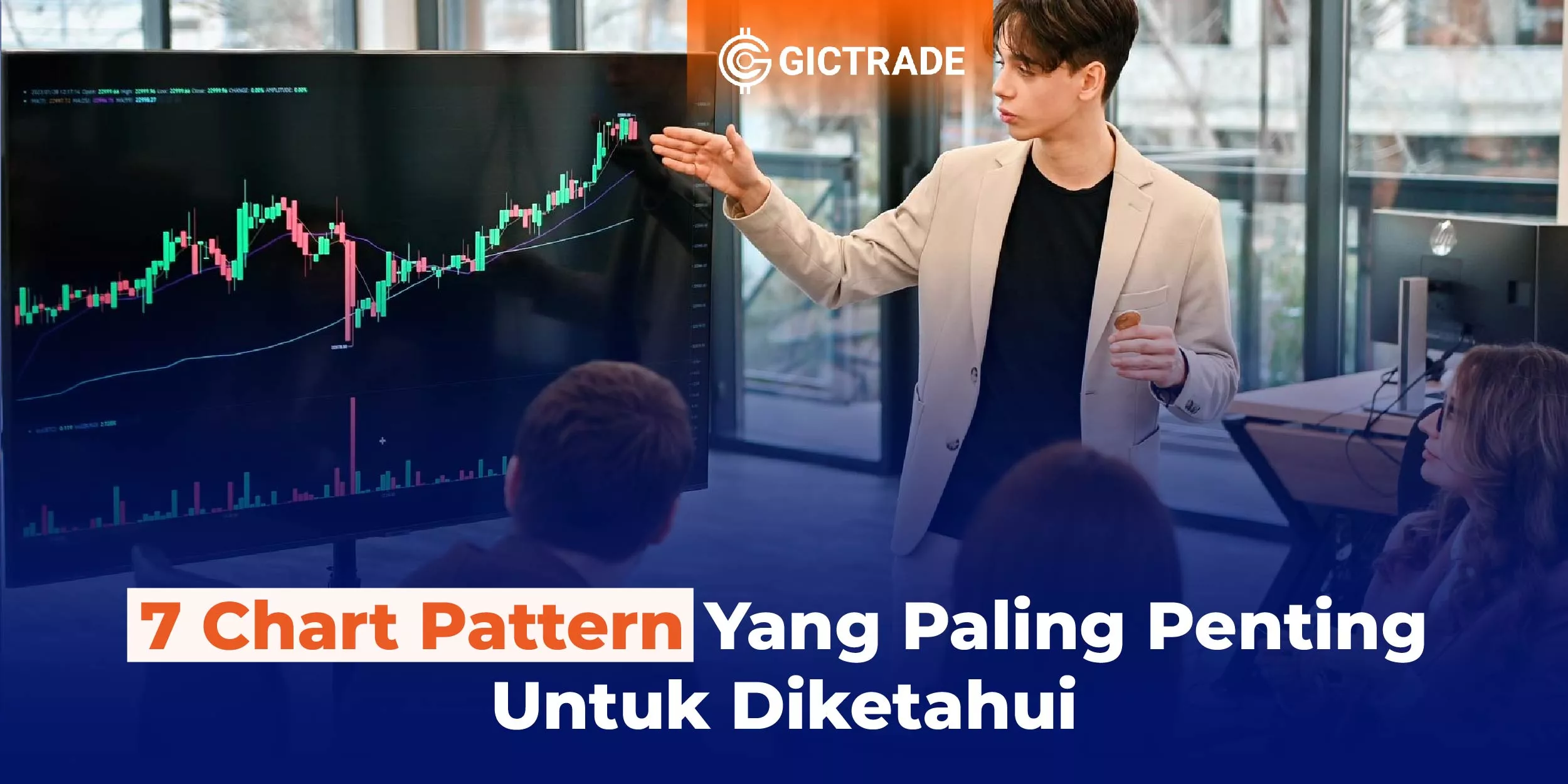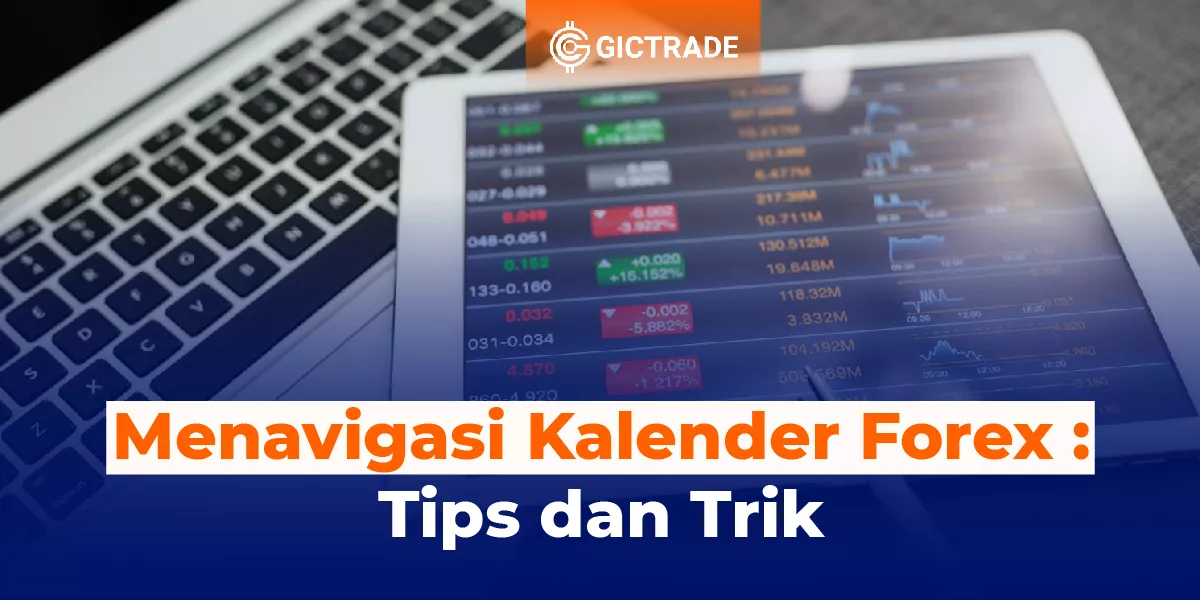The Most Important Chart Pattern - In stock trading, understanding chart patterns can be the key to success. Chart patterns are price patterns formed on stock price charts. By studying the most important chart patterns, you can identify profitable trading opportunities and avoid unnecessary risks. This article will discuss the 7 most important chart patterns to know, as well as provide an explanation of how to identify them and use them in your investment strategy.
.webp)
Table of Contents
The 7 most important chart patterns to know:
1. Head and Shoulders
The first chart pattern to know is Head and Shoulders. Head and Shoulders is one of the most important and popular chart patterns in technical analysis. This pattern is often considered an indicator of a trend reversal from rising to falling. Head and Shoulders consists of three peaks, with the middle peak being higher than the other peaks. This pattern is similar to the silhouette of a person who has a head in the middle and two shoulders on the sides.
How to Identify Head and Shoulders?
To identify the Head and Shoulders pattern, pay attention to the following steps:
- Left Shoulder: The first peak formed at a higher price than before. This indicates strong buyer pressure.
- Head: The second peak is the highest peak in the pattern. The price at this peak is higher than Left Shoulder and Right Shoulder. At this time, buyer pressure began to weaken.
- Right Shoulder: The third peak formed at a price lower than the Head but higher than the Left Shoulder. At this stage, the selling pressure is getting stronger.
- Neckline: A line that connects the valley between the Left Shoulder and the Head, as well as the valley between the Head and the Right Shoulder. This line serves as a support level.
Using Head and Shoulders in Trading Strategies
Once you have identified the Head and Shoulders pattern, you can use this pattern in your trading strategy. Here are some common ways to do it:
- Confirmation of Penetration: When the price manages to break the neckline down after the formation of Head and Shoulders, this can be a signal to take a sell-off. Many traders are waiting for this breakout as confirmation that a strong downtrend is happening.
- Target Price: To determine a potential price target, you can measure the height of the Head and Shoulders pattern (height from Head to neckline) and project it down from the neckline. This can provide an estimate of the price level that may be reached once this pattern is confirmed.
- Stop Loss: It is important to place a stop loss on your sell position. This stop loss can be placed above the neckline, so if the price breaks the neckline upwards, you can exit with a limited loss.
2. Double Top and Double Bottom
Double Top is a pattern that forms when the price reaches two parallel peaks before falling. In contrast, a Double Bottom is a pattern that occurs when the price reaches two parallel valleys before rising. This pattern can be used as a trend reversal indicator.
3. Ascending Triangle
Ascending Triangle is one of the important chart patterns in technical analysis. This pattern is formed when there is a horizontal resistance line that meets an uptrend line formed through the price valleys. This pattern indicates increased buyer interest and is often taken as a signal of a continuation of an ongoing uptrend.
How to Identify an Ascending Triangle?
Here are the steps to identify the Ascending Triangle pattern:
- Resistance Lines: Draw a horizontal line connecting parallel price peaks.
- Uptrend Line: Draw a diagonal line that connects the price valleys and tends to go up.
- Trading Volume: Pay attention to the trading volume during the formation of the pattern. Usually, the volume tends to decrease when the Ascending Triangle pattern is formed.
Using the Ascending Triangle in a Trading Strategy
Here are some ways to use the Ascending Triangle pattern in a trading strategy:
- Confirmation of Penetration: Wait for the price to break through the resistance line formed in the Ascending Triangle pattern. This breakout upwards can be considered a buy signal. Make sure to confirm the breakout with increasing trading volume to give strength to the signal.
- Target Price: To determine a potential price target after a breakout, measure the height of the Ascending Triangle pattern from the resistance line to the uptrend line, and project that height upwards from the breakout point. This can provide an estimate of the price level that may be reached.
- Stop Loss: It is important to place a stop loss on your buy position. This stop loss can be placed below an uptrend line or below a nearby valley to protect your position if the price reverses.
4. Descending Triangle
Descending Triangle is the opposite of the Ascending Triangle. This pattern is formed when there is a horizontal support line that meets a downtrend line formed through price peaks. This pattern indicates increased seller interest and is often considered a signal of a continuation of an ongoing downtrend.
How to Identify a Descending Triangle?
Here are the steps to identify the Descending Triangle pattern:
- Support Line: Draw a horizontal line connecting parallel price valleys.
- Downtrend Line: Draw a diagonal line that connects the price peaks and tends to go down.
- Trading Volume: Pay attention to the trading volume during the formation of the pattern. Usually, the volume tends to decrease when the Descending Triangle pattern is formed.
Using the Descending Triangle in Trading Strategies
Here are some ways to use the Descending Triangle pattern in a trading strategy:
- Confirmation of Penetration: Wait for the price to break through the support line formed in the Descending Triangle pattern. This breakout to the bottom can be considered a sell signal. Make sure to confirm the breakout with increasing trading volume to give strength to the signal.
- Target Price: To determine a potential price target after a breakout, measure the height of the Descending Triangle pattern from the support line to the downtrend line, and project the height downwards from the breakout point. This can provide an estimate of the price level that may be reached.
- Stop Loss: It is important to place a stop loss on your sell position. This stop loss can be placed above the downtrend line or above the nearest peak to protect your position if the price reverses.
5. Symmetrical Triangle
Symmetrical Triangle is a pattern that is formed when there is a support line that tends to rise and a resistance line that tends to fall. This pattern indicates market uncertainty and is often followed by significant price movements.
6. Cup and Handle
Cup and Handle is a pattern that is formed when the stock price forms a cup pattern followed by a handle pattern. This pattern indicates consolidation before the continuation of an uptrend and is often used as a buy signal.
7. Wedge
Wedge is a pattern that is formed when there are two trend lines moving in the same direction, but in opposite slopes. This pattern indicates market uncertainty and is often followed by strong price movements. The Wedge pattern can be used as a potential indicator to predict the continuation of the trend.
How to Identify Chart Patterns?
Identifying chart patterns requires a good understanding of stock price charts and careful observation. Here are some steps you can follow to identify a chart pattern:
- Pay Attention to the Price Patterns Formed: Observe the stock price chart carefully and look for patterns that have formed, such as peaks, valleys, trend lines, and support/resistance lines.
- Connect the Important Points: Draw lines that connect parallel peaks or valleys to form a specific pattern.
- Pattern Confirmation: Make sure that the patterns identified match the definition of the chart pattern you are studying. Pay attention to the specific characteristics of each pattern.
- Use Additional Indicators: In addition to observing price patterns, use technical indicators such as moving averages, trading volumes, or momentum indicators to provide further confirmation of the price direction.
- Pay attention to the trading volume: Pay attention to the trading volume that occurs when the pattern is formed. The high volume can confirm the strength of the pattern.
Want to Get Maximum Profit Fast? Join GICTrade Now!
Unlike other conventional brokerage firms, GIC through the GICTrade platform provides a solution for traders who do not want to be charged with high trading fees. GICTrade is a peer-to-peer trading platform that brings together traders and market makers.
So, what is special about GICTrade? As a platform that brings together traders and market makers, you as a potential customer can certainly choose between the two, namely becoming a trader or a market maker.
GICTrade's role as a transaction venue provider can minimize costs and help maximize profits for traders and market makers as well as create a fair transaction atmosphere and results.
Traders will benefit from the absence of commission fees and low swap fees and spreads due to the presence of market makers as liquidity providers. You can also join the trader community on GICtrade's Telegram to ask fellow traders directly about their trading experience.
FAQs (Frequently Asked Questions):
1. Do I need to learn all chart patterns?
No, you don't need to study all chart patterns. However, understanding the most important chart patterns can provide a solid foundation for your technical analysis.
2. How long does it take to identify a chart pattern?
The time it takes to identify a chart pattern can vary depending on your experience and skill set. The more often you look at the stock price chart, the more familiar you will be with the patterns that are formed.
3. How can I use chart patterns in my investment strategy?
You can use chart patterns as a tool to identify trade entry and exit points. For example, you can use trend reversal patterns as signals to buy or sell stocks.
4. Are chart patterns always accurate?
No, chart patterns are not always accurate. They are simply potential indicators of future price movements. It is always important to use additional confirmations and manage risk well.
5. Do chart patterns apply to all types of markets?
Yes, chart patterns can be applied in many different types of markets, including stocks, forex, and commodities. However, you need to understand the different characteristics and volatility of the market.
6. Do I need to use special software or tools to identify chart patterns?
No, you don't need to use any special software or tools. However, there are some trading platforms that provide an introduction feature.Also Read : Using Chart Patterns to Maximize Profits
Conclusion
In the world of stock trading, understanding chart patterns is a very valuable skill. By recognizing the price patterns formed on the chart, you can make smarter decisions in your investment strategy. In this article, we have discussed the 7 most important chart patterns to know, ranging from Head and Shoulders, Double Top and Double Bottom, to Ascending Triangle, Descending Triangle, Symmetrical Triangle, Cup and Handle, and Wedge. Each pattern has unique characteristics, and identifying them can provide an indication of the next direction of the price. However, it is important to remember that chart patterns are not a guarantee of success. The use of additional confirmations and good risk management is still required.
If you want to become a more advanced trader, take the time to learn and practice identifying these chart patterns. With careful observation and ever-growing experience, you can improve your expertise in analyzing stock price charts.
 Last:
Last: 







